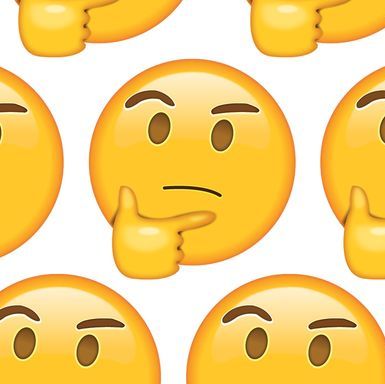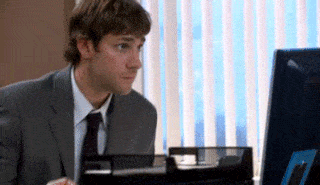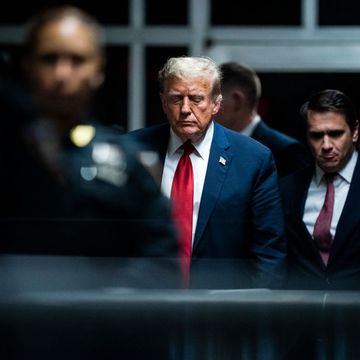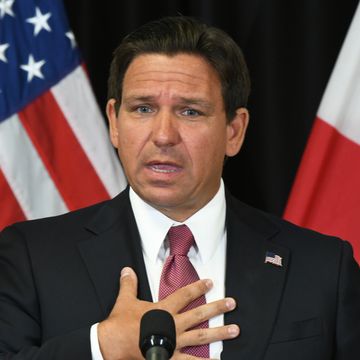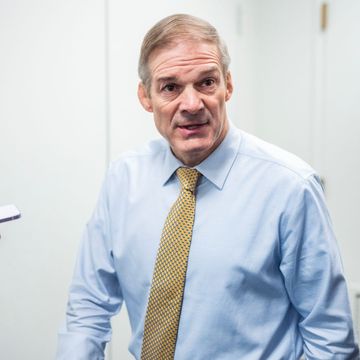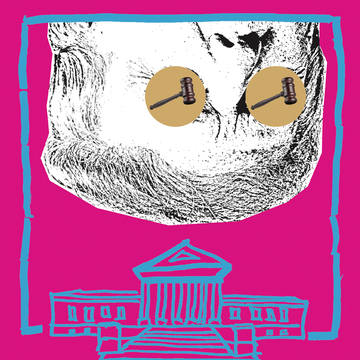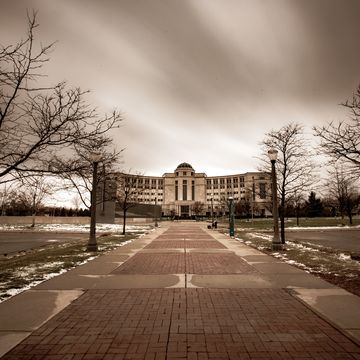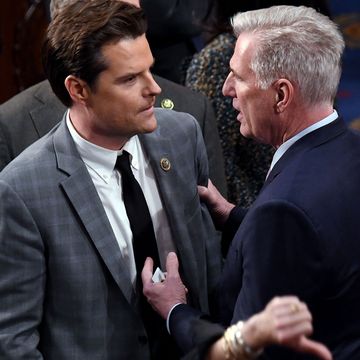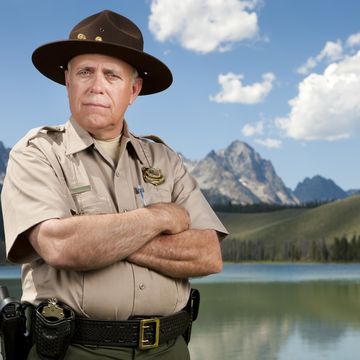Here’s a quick experiment: Think about the last news story, or hell, the last headline you read. Maybe it was this piece in The Washington Post arguing Antifa are just as bad as neo-Nazis. Or the one by Erik Prince in The New York Times explaining why only mercenary forces can win in Afghanistan. Maybe you woke up this morning to the president tweeting giddily, for the second time in a few weeks, about the size of an impending hurricane like it was a hit TV show:
Either way, it doesn't matter what the news is, because I already know what all of our reactions will be: 🤔
There’s an old saying that parents used to tell their kids: If you keep making that face it’s going to get stuck that way. In the dumbest year in recent memory, that warning has finally come paid. Our faces have all become stuck, a nation of concussed and bewildered morons absorbing the news piece by piece, stroking our chins pensively trying to make sense of information hell. Hmmmm. President Trump praises the size of his crowd at at a Harvey event in Texas 🤔. North Korea launches a missile over Japan 🤔. The Red Sox steal signs from the Yankees using an Apple watch 🤔.
In 2015, the Oxford Dictionaries named an emoji, Face With Tears of Joy, 😂 , as the word of the year, based on a study that found it was the most frequently used emoji globally. That seems like so long ago now that I can scarcely remember what we all found so amusing back then, or what laughter even sounded like. Now, every day is just 🤔.
“I think it’s because we’re through the looking glass,” said Charlie Warzel, a technology reporter at Buzzfeed and proponent of 🤔. “It doesn’t make sense to react to the insanity of the news of the day anymore and to say, ‘Oh that makes me sad.’ At some point you’re beyond whining or crying about what’s happening, and it’s like … this is my reality, I’m stuck in it. There’s no use in trying to stop it because you can’t, this is where we’re at so you might as well have a little fun with it.
“Most of the time it’s going to take a while to synthesize the events of the day, but Twitter doesn’t allow for that,” Warzel said. The thinking face “gives you a chance to say, 'Hey I’m watching.'”
Numbers on emoji use in 2017 aren’t available yet, but Jeremy Burge, founder of Emojipedia, says that 🤔 has placed in their top ten emojis for 2016 and 2017, making it the most popular among the group of emojis introduced in 2015, when it was first added to most phones.
Mark Davis, part of the Unicode Emoji Subcommittee, says the 🤔 design riffed on a similar concept that had been used on G-chat. While it’s slightly different across various services, the idea remains the same: a tiny face stroking its chin, uncertain about what it is they’ve seen. Hmmmm. Davis says the design was thematically inspired on Rodin’s The Thinker, which was originally a part of a larger work called the Gates of Hell, depicting Dante looking down into the Inferno. If that’s not an accurate summary of what it’s like logging on every day and trying to make sense of the chaos I don’t know what is.
[original sketch image]“Personally, I enjoy the way that every platform managed to convey this emoji with an expression that is both thinking and judging at the same time,” Burge says. “It’s not a ‘light bulb above the head’ or ‘thought bubble’ thinker. The raised eyebrow really suggests that this emoji is really for conveying disapproval of an idea, or, ‘I don’t really think that’s the case.’ It is sometimes expressing doubt, sometimes bemusement, sometimes just wondering what the hell is going on. Let's also not forget sneering or throwing shade—I think that usage might be contributing to its increased popularity recently, reflecting rampant whataboutism.”
CNN’s Andrew Kaczynski has 🤔 affixed to his Twitter username, presiding over every share of every story and headline he comes across, as if to christen each bit of news with an air of skepticism. Kaczynski put it there, he explains, “Because often it's the only logical response to the political hypocrisy we expose in so many of our stories."
The brilliance of the chin stroke is in the efficiency of its demployment. It’s often most effective when used on its own, without any further explanation, the face itself doing the heavy lifting of the rhetoric implied. Sometimes things are so self-evidently ridiculous that nothing more needs to be said.
“I think it’s just a universal response to almost anything,” comedian and prolific [thinking face] user Brandon Wardell explains. “It’s like our aloha.”
The meaning is changed ever so slightly by the inflection. Wardell’s style, for example, points up the inherent hilarity of the face, and works to undercut his own posts’ silliness.
Comedian and podcaster Nick Wiger says he often sees 🤔 used in that sense of undercutting a joke, but to him, his favorite emoji makes most sense in the political volleying online, particularly when trying to comment without getting too deep into things.
“For me it’s a very non-committal emoji, which is part of what I like about it,” Wiger says. “It doesn’t say anything strong, but it can convey, Oh, that’s interesting. Oh, that’s a little bit of a hot take. It can encompass any range from Good insight! to I’m not sure if I agree with that, but I don’t disagree enough to start a fight over it.”
With so much contradiction and hypocrisy coming across our screens on a minute-by-minute basis, sometimes all you can do is grab your chin and start stroking.
“It just felt like the reaction I have to almost 90 percent of the things I see online now is that exact face,” says Select/All’s Max Read, who uses 🤔 as his avatar on Twitter.
Read wrote about 🤔 when it first arrived, right around the time Trump once again claimed people he’d seen footage of Muslims in New Jersey cheering on 9/11, then Ben Carson echoed his story, which was false. At the time, Read says, I was like, I’m not mad. I’m not shocked, even. I have no reaction to this but to quietly put my chin in my fingers and say, Hmmm.”
Read likened reactions like this to the Jim Halpert Face meme from The Office.
“That turn to the camera, a helpless plea for somebody else to witness alongside you the kind of insanity you're being forced to witness. I think of it as the same genre as the shruggie, the grimace, the upside down smile, simply when you don't know what to say about something, things that are happening that are beyond interpretation and all you can do is make a face and hope that somebody else gets what you mean.”
In a period of so much reactionary shouting, and bewildering, exhausting rhetoric, the act of performatively thinking, while often conveying its own sort of judgement, tacit, or otherwise, is almost a breath of fresh air. We may have all become the thinking face emoji when we read the news, but maybe that’s not such a bad thing. It can be a momentary pause button. An almost plea of sorts to one’s readers and followers to perhaps think something over before we cast judgment on it. Or it's simply making everything dumber and worse.

Luke is a writer from Boston who writes the newsletter Welcome to Hell World and author of a book of the same name.
